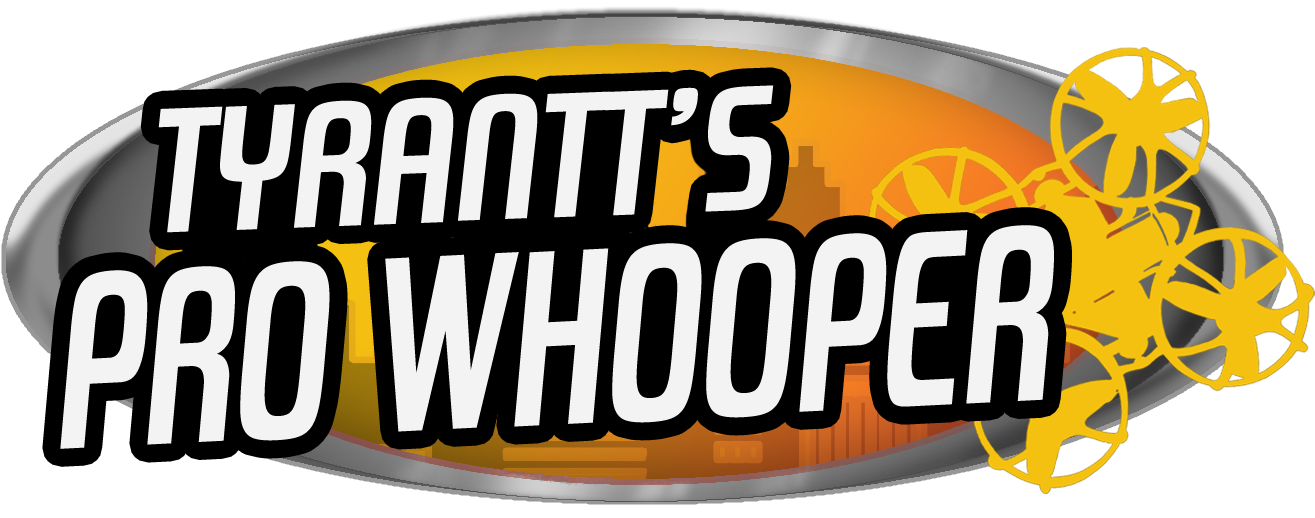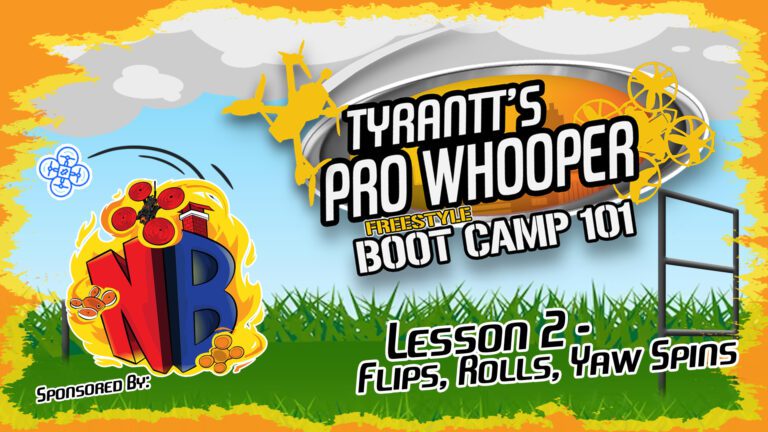
Freestyle Relay is an exhilarating, team-based whoop competition inspired by the classic electronic game “Simon.” Just like Simon builds on a sequence of colors and sounds, Freestyle Relay challenges pilots to replicate and extend a growing freestyle line. Teams must collaborate, strategize, and execute with precision as the freestyle line increases in length and complexity round by round. It’s a fast-paced, inclusive event where pilots from all over the world—from rookies to pros—play a vital role in their team’s success. Are you ready to take on the challenge and fly your way to victory?
Quick Overview: How It’s Played
Freestyle Relay pits 2-4 teams of pilots against each other in a multi-round competition. Teams work together to complete freestyle lines, score points, and earn bragging rights. The competition is designed to be inclusive and dynamic, rewarding skill, creativity, and strategic teamwork.
- Teams and Tiers: Players are divided into balanced teams, each with Rookie, Intermediate, and Pro pilots.
- Freestyle Line Progression: The first round starts with a simple freestyle line of three tricks. At the end of each round, the team with the highest score—based on execution and the value of added tricks—becomes the leader for the next round. The leading team votes on one of their pilot’s lines to set the new foundation, using the added tricks to play to their strengths while increasing the challenge for the next round.
- Collaboration: Teams strategize to decide which tricks each player will perform, allowing players to focus on their strengths and contribute to their team’s success.
- Scoring: Tricks are scored based on the Tricktionary, with points awarded for trick difficulty, execution, and uniqueness. Only the top scores from each team count, encouraging pilots to push their limits.
- Winning: The team with the highest cumulative score after all rounds is crowned the winner.
Registration
Participants fill out a Google Form providing necessary details such as pilot name, location (US or international), goals, drone type, prize preferences, and contact information for prize distribution. Click here to register!
Who Can Participate?
Everyone! This is an international event, so everyone may participate no matter where they live. Whether you’re flying from the beaches of California to the mountains of Switzerland, you can join in on the fun and showcase your skills from anywhere in the world.
Schedule
Starts: January 16th
- Round 1 – 1 week deadline
- Round 2 – 1 week deadline
- Round 3 – 2 week deadline
- Round 4 – 2 week deadline
- Round 5 – 2-3 week deadline (TBD)
Teams
- Number of Teams: 2-4 teams based on total participants (TBD).
- Balanced Teams: Each team is composed of Rookie, Intermediate, and Pro pilots to ensure a fair and competitive experience. Pilots will select their skill level during registration to help create evenly matched teams.
- Tier Enforcement: Pilots must follow the tier-specific rules to ensure fair competition. Failure to comply may result in their videos being disqualified for the round or reassignment to a different difficulty tier.
- Team Size: There will be 5+ players per tier on each team, with a minimum of 3 active scores counting each round.
- Team Captains: Assigned during team formation to help guide team strategy.
Tier-Specific Rules:
- Rookie Tier: Rookie pilots may only participate with beginner and novice level tricks. Intermediate or higher-level tricks will disqualify the submission.
- Intermediate Tier: Intermediate pilots may only participate with beginner, novice, or intermediate tricks. Pro-level tricks are not permitted and will result in disqualification. Additionally, to keep the gameplay balanced, intermediate tricks cannot be performed consecutively; they must be followed by a beginner or novice trick. Rookie tricks may be performed back to back without restriction.
- Pro Tier: Participants may use all tricks within the Tricktionary, but advanced and Master level tricks cannot be performed consecutively. Each advanced trick must be followed by an intermediate or lower-tier trick. Rookie and intermediate tricks can be performed back-to-back without restriction.
How it’s played
- Starting Simple: The first round begins with a freestyle line of three tricks. Every player performs these three tricks, then adds two more tricks of their choice to the end of the line based on their tier’s difficulty level.
- Determining the Leader: At the end of the round, the team in each tier with the highest score—calculated by their execution of the full line and the Tricktionary value of their added tricks—becomes the leader for the next round.
- Building the Freestyle Line: The leader team votes on one of their pilot’s complete freestyle lines to serve as the foundation for the next round. This lets teams build on their collective strengths while raising the difficulty.
- Teams should strategize to decide which tricks each player will perform, ensuring pilots can focus on their strengths, boosting overall team performance.
- Progressing Through Rounds: In round 2, players will perform the freestyle line chosen by the round 1 leader, then add two new tricks to the end. This process repeats each round, with the line growing longer and more challenging as the competition progresses.
- The Final Challenge: The final round ramps up the difficulty with a long sequence of additional tricks added to the round 4 line. Players will push their flying skills and memory to the limit as they try to complete as much of the line as possible before crashing or the time runs out.
Example Freestyle Line:
- Round 1: Flip, Roll, Powerloop + 2 tricks
- Round 2: Flip, Roll, Powerloop, Vanny Roll, Juicy Flick + 2 tricks
- Round 3: Flip, Roll, Powerloop, Vanny Roll, Juicy Flick, Matty Flip, Half Mavvy + 3 tricks
- Round 4: Flip, Roll, Powerloop, Vanny Roll, Juicy Flick, Matty Flip, Half Mavvy, Yaw spin, Rubik’s Cube, Split S + 3 tricks
- Round 5: Flip, Roll, Powerloop, Vanny Roll, Juicy Flick, Matty Flip, Half Mavvy, Yaw spin, Rubik’s Cube, Split S, Wall Tap, Maverick Loop, Jump Rope +10 to 20 more tricks.
Scoring System
Individual Scoring
Pilots earn their score by referencing the Tricktionary to determine trick values and using our calculator to factor in points for difficulty, execution, and uniqueness.
- Trick Difficult: the value of the tricks you add to line each round plays a big impact on your individual and team score. The more difficult a trick is, the more points it will earn you.
- Execution: How well you perform each trick
- Sloppy: performing a trick with sloppy execution will come with a 35% penalty for the trick
- Bumps/Taps: Bumping an object or tapping the ground will result in a 50% penalty
- Crashing: Crashing at any point during the run will end your run
- New/Unique Tricks: Additional tricks not performed by any teammate during the current round, or in the main freestyle line, will earn a 1.5x multiplier.
- Strategize with your team to maximize your points by bringing unique lines to the table.
- Repeated Tricks: Tricks repeated within a team during the current round or already part of the main line earn a reduced multiplier:
- 1x multiplier for repetition within a team.
- 0.33x multiplier for repeating tricks already in the main line.
Team Scoring
Negate Bottom 2 Scores: Each round, the two lowest pilot scores are removed from each team, ensuring only the highest scores are considered. This allows for the focus to remain on the team’s top contributors without penalizing the team for absences or rough performances.
With the team scores finalized, all pilot scores within the same tier across all teams are stacked and ranked from highest to lowest. Pilots then earn team points based on their ranking within the tier, which contribute to their team’s overall score across all rounds.
Tiebreakers
- Obstacle Advantage: In case of a tie, tricks are re-scored using the full calculator, factoring in obstacles used during their freestyle line (e.g., Single Gate, Cube, Triple Gate Stack, etc) to determine the winner.
Substitute Pool
- If a pilot knows they will miss a round, they can request a substitute from the substitute pool for just that round.
- Substitutes are randomly drawn from the pool and must be from the same tier as the pilot they are replacing.
- The substitute pool consists of:
- Pilots with limited availability who cannot commit to the full competition.
- Pilots who registered after the competition began.
- Pilots who miss a week without prior notice may be permanently replaced and moved to the substitute pool.
Spreadsheet Overview
Check out our performance dashboard to keep up to date with the leaderboards, video submissions, prizes, and more
Winning Conditions
- Victory: The team with the highest cumulative score after 5 rounds wins.
- Equal Contribution: All tiers have equal weight in determining the outcome, ensuring rookies, intermediates, and pros contribute meaningfully.
Video Submission and Review
- Deadline: Deadlines will last 1 week for early rounds and 2 weeks for later, more complex rounds
- Length: Time limits to perform the line will start off around 25 seconds, and slightly increase each round as the freestyle lines become longer.
- Bonus Time: Add 5 seconds to the freestyle time limit by including the Pro Whooper logo at the start of your video.
- Skits: You may add 30 seconds to use for intros, outros, and skits
- Live Streams: There will be a review live stream every week to showcase all of the submitted videos.
- Review Streams? Every week, we will host a review live stream to showcase the best videos from the previous week’s challenges.
Please note that the details in this overview will change every round during the boot camp. For the most current rules, please refer to the current round details page.
Drone Requirements
- The whoop must be under 85mm
- It can use 1S or 2S
- It must have ducts
Discord
Tyrantt’s Whoop Lounge Discord server, is the beating heart of Pro Whooper. It’s the central hub where you’ll receive real-time updates, engage in lively discussions, and share your videos. This dynamic community connects Pro Whooper enthusiasts and provides a platform for you to immerse yourself when you’re not flying. Inside the server, you’ll conveniently find a treasure trove of resources, which includes our active whoop building and repairing channels to help keep you in the air. Click here to join!
Primary Channel of communication: All official communications and notifications will be conducted through Discord.
Support Pro Whooper on Patreon
Tyrantt’s Pro Whooper is a labor of love, built from the ground up with a focus on providing high-quality community events that focus on learning and competition experiences for freestyle drone pilots of all skill levels. Hosting live streams, organizing events, and shipping out prizes require a significant amount of time, effort, and financial resources. By joining our Patreon, you can help support the continuation and growth of Pro Whooper. Your contribution will directly support:
Live Streams and Events:
- Covering the costs associated with hosting and streaming live events.
- Ensuring high-quality production and engagement for all participants.
Prizes and Giveaways:
- Funding the shipping of prizes for weekly challenges and events.
- Providing exciting incentives to keep participants motivated and engaged.
Development of Future Pro Whooper series:
- Investing in the creation of new competitions and challenges.
- Creating future seasons of existing series, such as Season 2 of the TPW competition and Freestyle Boot Camp 201.
Support Freestyle Relay on Patreon
The Freestyle Relay is a labor of love, created to unite and challenge pilots in a fun and competitive format. From hosting live streams to organizing events and shipping prizes, it takes significant time, effort, and resources to bring this event to life.
By supporting us on Patreon, you contribute directly to:
- Live Streams & Events: Delivering high-quality, interactive experiences for pilots and fans alike.
- Prizes & Giveaways: Shipping physical prizes that keep participants motivated and engaged.
- Future Development: Expanding the Freestyle Relay and creating new Pro Whooper events for the community.
Your support makes all the difference in ensuring the growth and success of this exciting series. Join us on Patreon and help elevate the Freestyle Relay to new heights!
Terms of Service
- Participants must adhere to FAA regulations and are responsible for the safety and maintenance of their drones.
- Pro Whooper is not liable for any damage, loss of property, or injury caused by the participating pilot.
Pro Whooper will not be verifying compliance. By participating, you agree that you are fully compliant with all local regulations, including FAA guidelines, and will not hold Pro Whooper liable for any incidents or violations, or for any damage, loss of property, or injury to self or others caused by the participant



